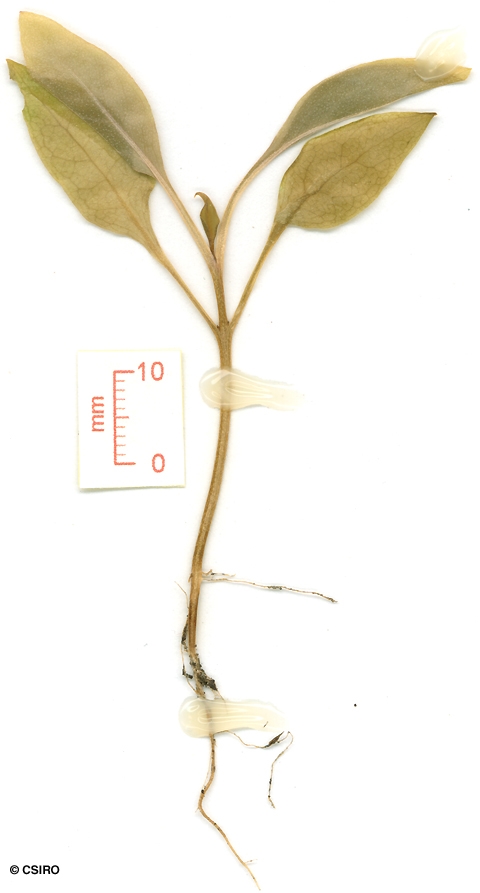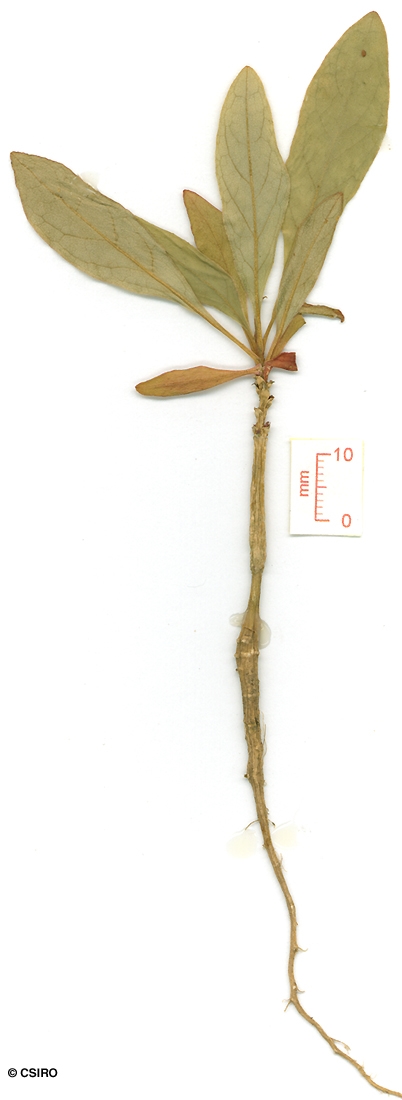Australian Tropical Rainforest Plants - Online edition
Phytolacca octandra L.






Linnaeus, C. von (1762) Species Plantarum ed. 2, 1 : 631. Type: Mexico.
Inkweed; Red-Ink Plant; Dyeberry
Usually flowers and fruits as a shrub about 1 m tall.
Leaf blades about 6-15 x 1.7-6 cm, petioles about 1-3 cm long. Leaf blade rather thin and papery, wilting quickly when picked. Twigs very pithy, sometimes hollow, outer surface often pink or red. Old leaves turn pink prior to falling.
Inflorescences about 7-25 cm long, +/- leaf opposed, pedicels and the axis of the inflorescence finely tuberculate. Tepals about 2.5-4 mm long. Stamens eight, arising from a ring of tissue. Ovary green, about 6-8-locular and 6-8-lobed, styles and stigmas pink or purple.
Fruits depressed-globose, about 0.7-10 mm diam., longitudinally furrowed, +/- pumpkin-shaped (Cucurbita pepo) pericarp producing reddish ink-like fluid when crushed. Tepals persistent at the base of the fruit. Seeds shiny black, about 2 mm long. Embryo coiled around the perimeter of the seed with the endosperm centrally located.
Cotyledons about 20-25 x 10 mm, petiole about 10 mm long. At the tenth leaf stage: seedling glabrous, leaves elliptic, apex acuminate, base attenuate, margin furnished with fine hair-like teeth visible only with a lens. Old leaves turn pink prior to falling. Taproot swollen carrot-like (Daucus carota).
An introduced species originally from tropical America (Mexico - Colombia), now naturalised in NEQ, CEQ and southwards as far as Victoria and Tasmania. Altitudinal range in northern Australia from 400-1500 m. Grows in disturbed areas, particularly roadsides and clearings in upland and mountain rain forest.
The fruits are eaten by the Ring Necked Pheasant on the Atherton Tableland. Although this species is often assumed to be poisonous there is no positive proof that it is. Everist (1974).
This species may have medicinal properties. (http://squid2.laughingsquid.net/hosts/herbweb.com /herbage/A20218.htm)





